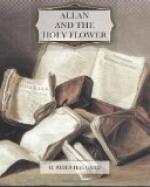We slept in one of these houses on our march, and should have found it very comfortable had it not been for the innumerable fleas which at length drove us out into the courtyard. For the rest, these Mazitu much resembled the Zulus. They had kraals and were breeders of cattle; they were ruled by headmen under the command of a supreme chief or king; they believed in witchcraft and offered sacrifice to the spirits of their ancestors, also in some kind of a vague and mighty god who dominated the affairs of the world and declared his will through the doctors. Lastly, they were, and I dare say still are, a race of fighting men who loved war and raided the neighbouring peoples upon any and every pretext, killing their men and stealing their women and cattle. They had their virtues, too, being kindly and hospitable by nature, though cruel enough to their enemies. Moreover, they detested dealing in slaves and those who practised it, saying that it was better to kill a man than to deprive him of his freedom. Also they had a horror of the cannibalism which is so common in the dark regions of Africa, and for this reason, more than any other, loathed the Pongo folk who were supposed to be eaters of men.
On the evening of the second day of our march, during which we had passed through a beautiful and fertile upland country, very well watered, and except in the valleys, free from bush, we arrived at Beza. This town was situated on a wide plain surrounded by low hills and encircled by a belt of cultivated land made beautiful by the crops of maize and other cereals which were then ripe to harvest. It was fortified in a way. That is, a tall, unclimbable palisade of timber surrounded the entire town, which fence was strengthened by prickly pears and cacti planted on its either side.
Within this palisade the town was divided into quarters more or less devoted to various trades. Thus one part of it was called the Ironsmiths’ Quarter; another the Soldiers’ Quarter; another the Quarter of the Land-tillers; another that of the Skin-dressers, and so on. The king’s dwelling and those of his women and dependents were near the North gate, and in front of these, surrounded by semi-circles of huts, was a wide space into which cattle could be driven if necessary. This, however, at the time of our visit, was used as a market and a drilling ground.
We entered the town, that must in all have contained a great number of inhabitants, by the South gate, a strong log structure facing a wooded slope through which ran a road. Just as the sun was setting we marched to the guest-huts up a central street lined with the population of the place who had gathered to stare at us. These huts were situated in the Soldiers’ Quarter, not far from the king’s house and surrounded by an inner fence to keep them private.




